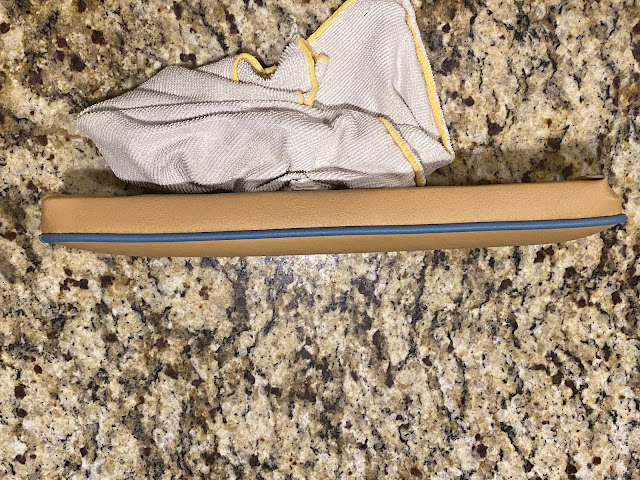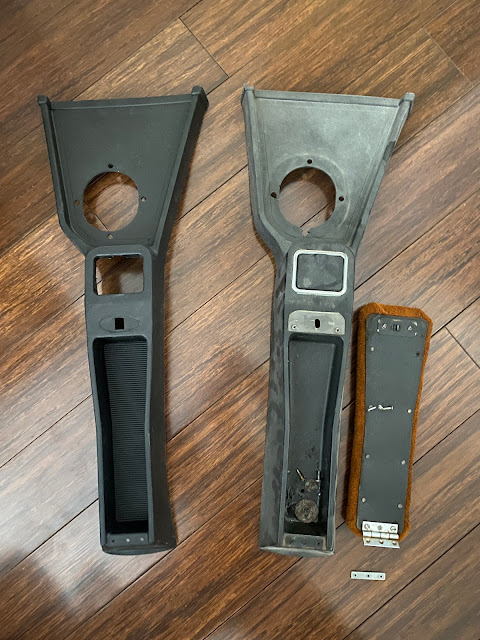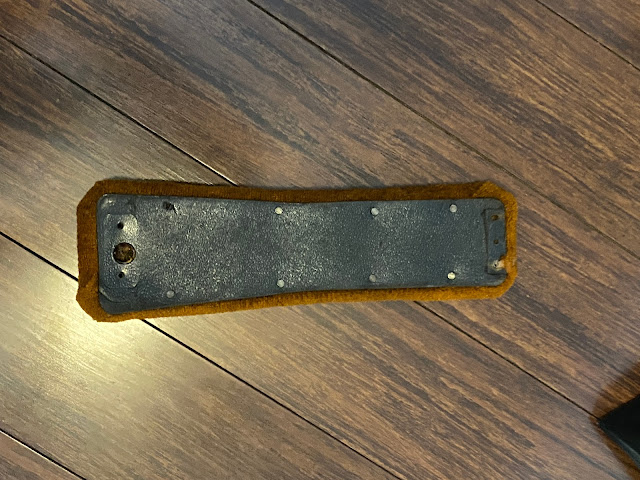The more I get around this car, the more I find I need to do...
But for today's episode, I'm happy to have completed something really well - replacement of the bottom portion of the passenger's front wing. Here's the basics and a little talk about welding, too.
Welding is something that is a bit of magic to many people. How do you just cut off a piece of a car, and put a new piece back on? The cutting-off part is up to you, but the putting-on (welding) part is really not that difficult with some practice.
First, make sure you have decent equipment. I have a MIG (metal-inert-gas) wire feed welder with gas shield. It's a Hobart 140, made by Miller, who makes really good stuff.
I also have a good welding helmet with a large viewing area and an auto-darkening window. The helmet is essential! Not only does it protect your eyes, it protects your face. Welding goggles won't cut it - they will filter the brightness, but not the UV that is really what hurts your eyes. (Think snow-blindness.)
Finally, welding gloves for up-close work are helpful to keep from burning your hands, though they make it a little harder to hold the gun (where the wire and gas come out). Long sleeves and jeans are my usual garage attire when I weld.
MIG welding is a simple process. The welder takes a ground to the thing being welded, and feeds charged wire through a triggered nozzle at an adjustable rate and power. When the wire contacts the surface of the item being welded, it gets really, really hot - hot enough to melt the metal in that tiny little spot. The composition of the wire aids in mixing the melted metals together to form a strong bond that isn't brittle. The gas shields the weld area to keep oxygen out. A 75%/25% Argon/CO2 mixture is a typical shielding gas for MIG welding.
Of course, it isn't that simple, but the process is really neat.
The first step is to remove the stuff you want gone. Like this.
(I cleaned all of this up before I put the new panel in place.)
The next step is to get the piece you want to put in place, to fit. This took me quite a while as the replacement panel did not "just fit". I had to adjust the fit a couple of dozen times before I was satisfied. In the case of this patch panel, I had to recurve the panel and rework the flange on the bottom where it attaches to the body so it lined up properly in all three dimensions. I think it turned out well.


The fit along the weld line is critical. There are a couple of common ways to fit panels: lap welding, where the new panel is either above or below the old; and butt welding, where the two panels do not overlap but instead their edges 'butt' up against each other. (All you teenagers out there, yeah, I said 'butt'.) Butt welding is to me preferred and what I did here. The gap between the panels must be even and tight, but there needs to be a tiny little give in between so the panels have room to expand slightly from the heat of welding. (Welding makes things very hot - and hot things expand.) I have a couple of magnets to hold the panel where I want it before I start.
Preparation of the surfaces is also key. You can't weld rusty metal! The oxides in rust (iron oxide) will blow anything you try to weld right apart. The metals must be clean and thick enough to withstand the heat of welding. That's one of the most difficult parts of rust repair for me - cutting back what looks like good metal because it is too thin to be welded, to find a solid base for the repair.
Once the panels are lined up and clean. it's time to begin welding. This is where experience comes into play - not just with the process, but with your equipment. For example, the recommended settings for my welder are "power: 2, speed: 30" for this thickness of metal and wire diameter (.023"), but that blows holes in the panel very quickly (by heating things up too fast and making them into vapor). I use "power: 1, speed: 40" and it is quite effective, but that's my setup. The sound of a good weld is that of "frying bacon", and getting that figured out with your welder takes a little time and practice.
The start of every repair job is to tack the repair into place. This let you see that you like the fit and easily undo and reset if you make a mistake (like the panel alignment not being flat). It also lets the overall weld area stay cooler and minimize distortion. Like this:
The repair is held in place with many small spot welds, and distortion is pretty small (about 1/16" measured with a ruler). I will be able to do a little 'massaging' afterward and get things even closer.
As I applied spot welds, I did not go one after the other in a row. I tacked the panel at each end, and a couple in the middle, and then let it cool down a bit. I then jumped around with more tack welds to keep the heat even, and when done I let it all cool down.
Now that the panel is tacked in place, it is time to fill in the gaps between tack welds. For this, you want to lay a short bead of weld, once again jumping around to keep heat distribution somewhat even and distortion to a minimum. There are two techniques for this: "pushing" and "pulling" the bead. "Pushing" means you aim the wire at (toward) the thing you are welding, then as you weld you push little dabs of weld into what you just welded. "Pulling" is the opposite; you aim the wire away from and drag the weld along. They both work, but I tend to 'push'.
It is hard to weld thin metal like this, as the metal heats up so quickly it vaporizes. To combat this, you want to spread the heat around a little by zig-zagging up-and-down (or left-and-right) ever so slightly.
The key is to get a reasonably flat weld that penetrates through the metal so you have the maximum amount of strength. Too little heat will leave a bead on top of the panel, but not hold it; too much will almost immediately vaporize the metal. Practice and knowing your equipment is key.
In the end, the panel is fully stitched into place.
The weld is complete, flat and clean.
Once cleaned up...
Afterward, a little filler to smooth out any small waves will make everything look perfect. Unless you're a master metal worker, that's gonna happen. I'm not bad, but not that good.
Like I said, this takes practice and time. Many times, many, many time you will have the weld too hot and blow holes in the panel, or perhaps not have it hot enough and not get good penetration into the metal.
See? Welding isn't so hard. Like everything in life, preparation and practice is the key to success.











































